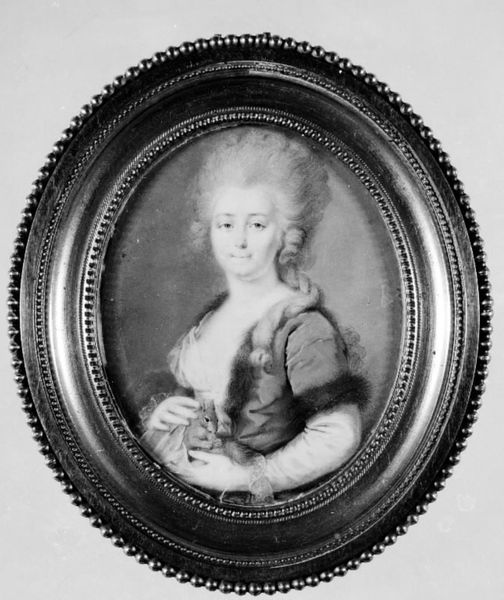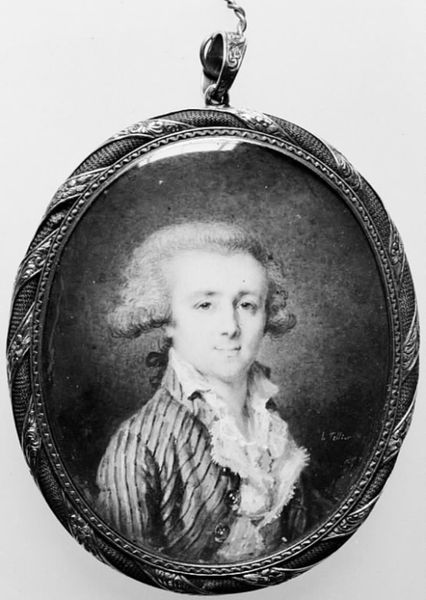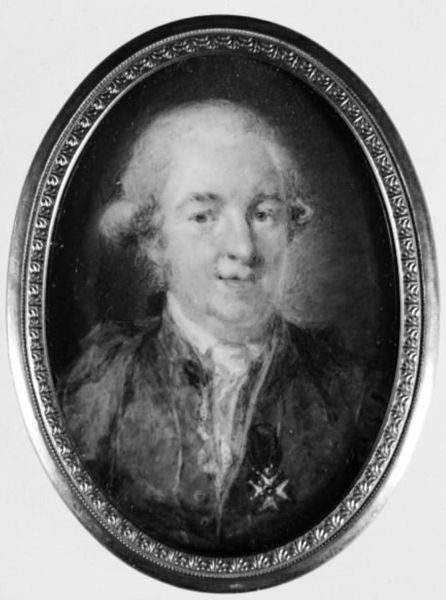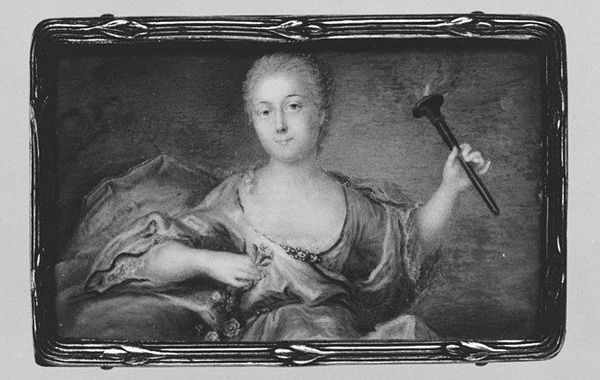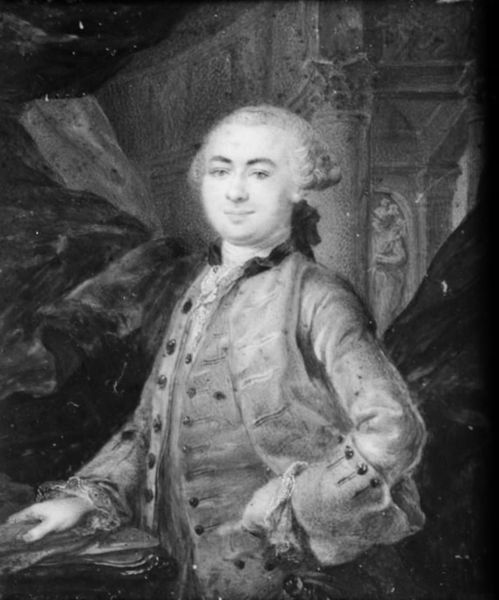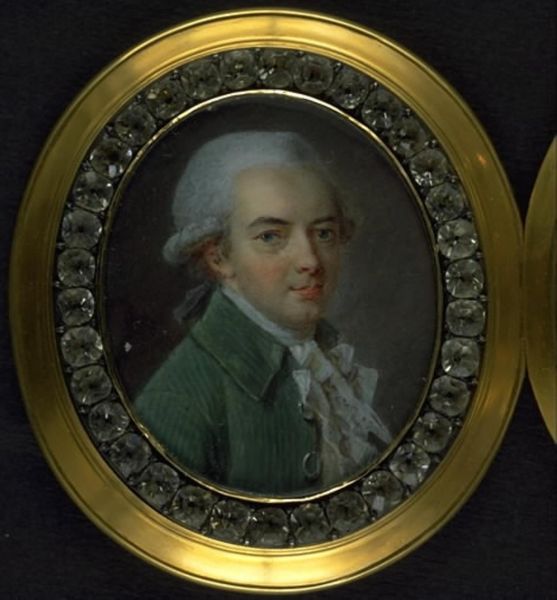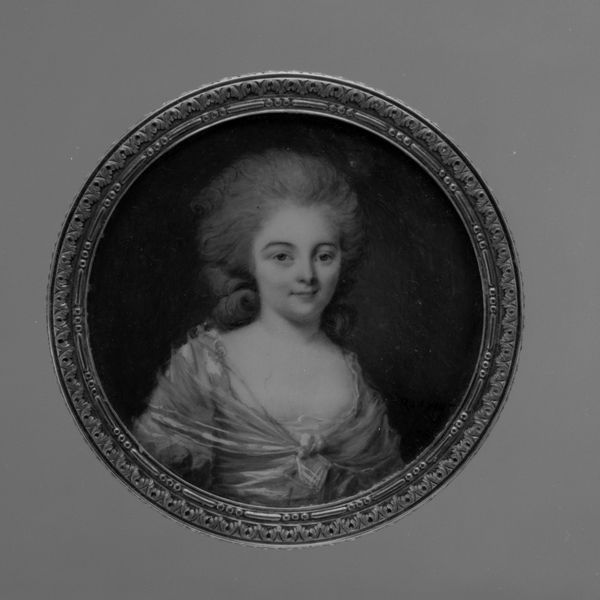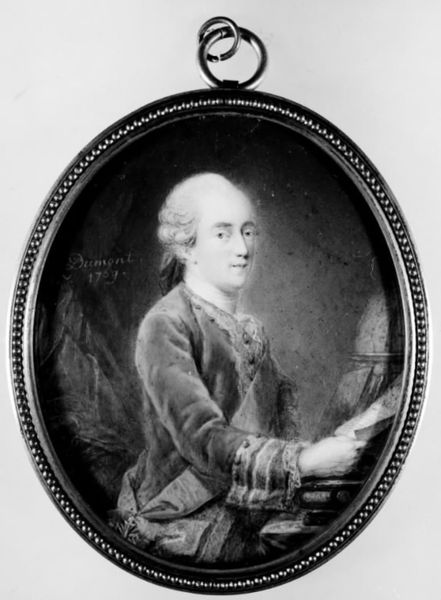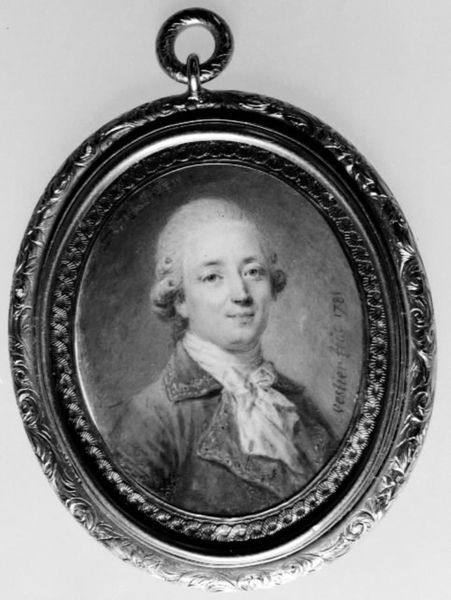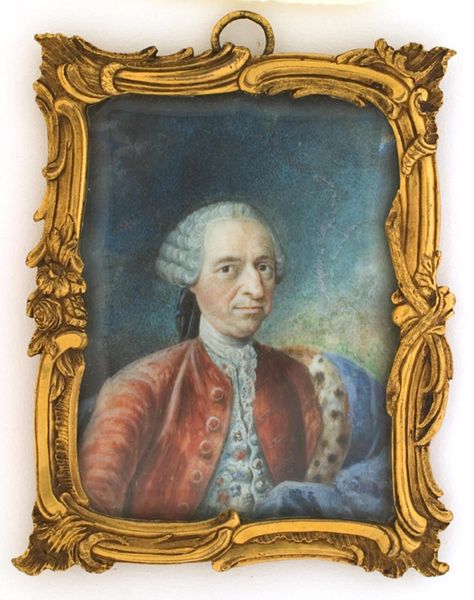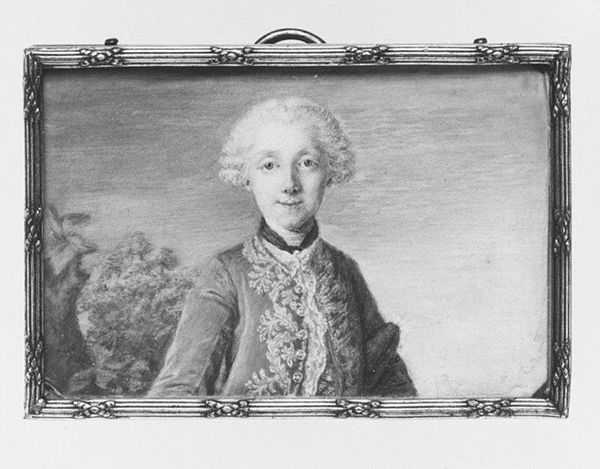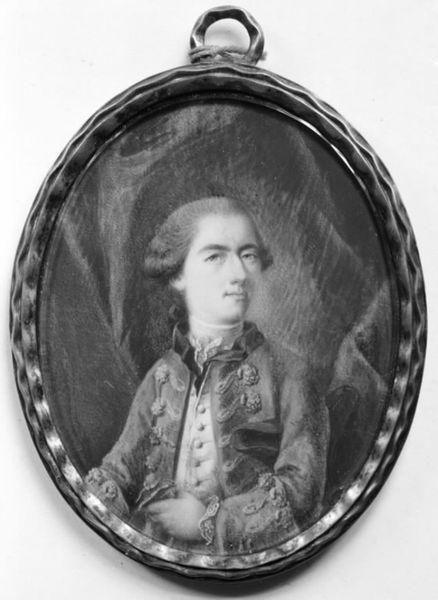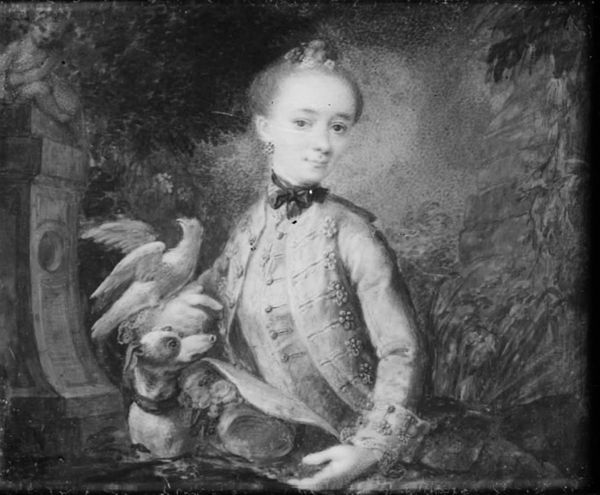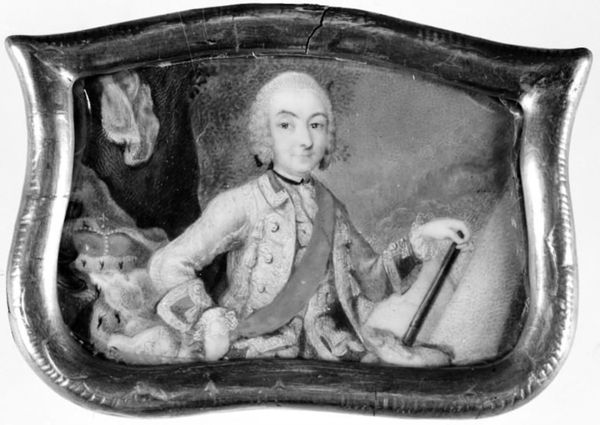
Twin Portrait of a Gentleman and a Lady Sitting at a Table 1766
0:00
0:00
painting
#
portrait
#
portrait
#
painting
#
intimism
#
group-portraits
#
genre-painting
#
rococo
Dimensions: 6 cm (height) x 8.2 cm (width) (Netto)
Curator: Let’s turn our attention to this remarkable piece, "Twin Portrait of a Gentleman and a Lady Sitting at a Table" painted in 1766 by Cornelius Høyerm currently housed here at SMK. Editor: Immediately striking! There’s an almost eerie formality, but a restrained tenderness, too. Is that shared sheet music in front of them? It’s intriguing how the artist stages them both in muted tones against this slightly out-of-focus background. Curator: Precisely, these "conversation pieces" were popular amongst the bourgeoisie in the 18th century, marking a shift towards valuing domestic life and shared activities. Note the emphasis on musicality as a form of cultural refinement. This painting really encapsulates Rococo aesthetics through intimate portraiture. Editor: Indeed, the presence of sheet music tells a very particular story about who these individuals are and what activities filled their hours. This piece is incredibly staged though, which somewhat clashes with ideas around ‘intimacy’ as we think of it now. It makes me consider questions about social class and gender—particularly the performance of marriage in this period. Does this presentation allow us to consider their roles in society? Or is this merely an aspirational narrative presented through brush strokes? Curator: Certainly, one could analyze the very social constructions enacted here, between the power dynamics implicit in their gazes to their costuming. Beyond individual expression, it showcases bourgeois culture as performative. The institution of marriage itself was undergoing great social and structural shifts during this time. This visual representation mirrors this perfectly. Editor: Right, the portrait form almost weaponizes its symbolism, solidifying social values in paint. Yet it leaves space, still, for curiosity about their real relationship beyond performance, beyond aspiration. Do you get the impression this picture romanticizes societal and marital structures, or critiques them? Curator: A complicated question! I see it functioning more as an affirmation of social norms—yet within art history, a careful study of material culture often unlocks hidden rebellions and nuances. Perhaps in their gaze there is indeed a silent commentary we're yet to decipher fully. Editor: It’s a testament to how much portraits can tell, or rather, allow us to interrogate. Now, walking away, it leaves me contemplating societal performance, which sadly rings as true now as then. Curator: Indeed. Høyerm delivers here a complex and thought-provoking statement on the public image in the domestic sphere—inviting deeper thinking even to this day.
Comments
No comments
Be the first to comment and join the conversation on the ultimate creative platform.
